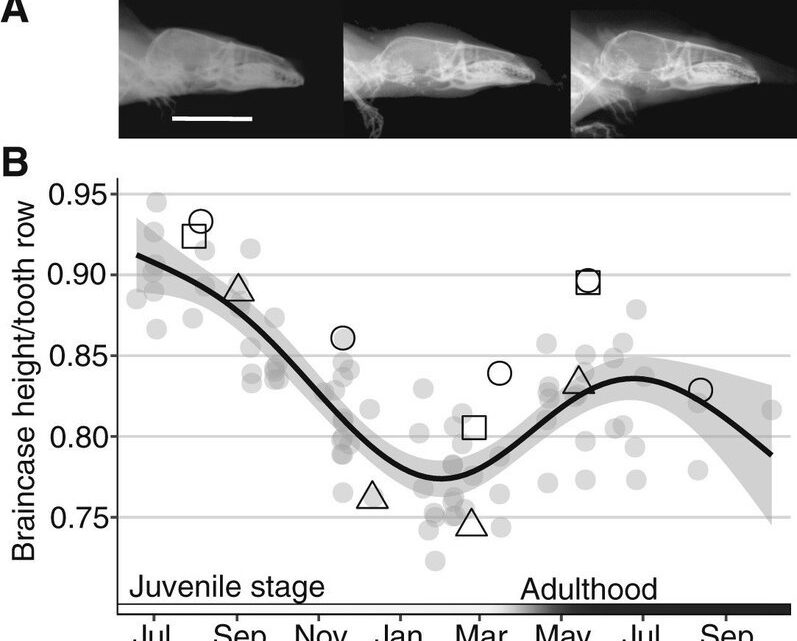The Dehnel Phenomenon
December 31, 2017
The Dehnel phenomenon, named after its discoverer, Polish zoologist August Dehnel, is the ability of certain species of animals such as shrews and weasels to shrink skull, bones and major organs in order to survive scarce food situations. Interestingly, they shrink in anticipation, before the actual scarcity arrives, unlike the Marine iguana of the Galapagos islands who shrink as a consequence of food scarcity during El Nino global warming events. A recent study of the Dehnel phenomenon in the Common shrew shows an average decrease in skull size of 15 to 20% during autumn, as well as the ability to regrow the skull in spring months by almost 10%, leaving the older adult with a slightly smaller head than juveniles.
Shrews live in seasonal environments with great differences in food availability but they are unable to hibernate or migrate to deal with winter scarcity. Instead they migrate within the body. Shrews need to eat near-constantly to survive so being smaller means they need less food. “If you shrink an organ like the brain which is disproportionally more ‘expensive’ than other kinds of tissue you might save energy,” said Javier Lázaro, one of the authors of the study. An average decrease in body-mass of 19% leads to a winter reduction of 18.2% in a shrew’s absolute resting metabolic rate. According to his co-author Dina Dechmann: “Normally, animals in colder zones are larger and have a good volume-to-surface ratio to compensate for heat losses. The shrew, on the other hand, has a low volume-to-surface ratio and could possibly save vital energy through shrinking”. Although exceptional “the phenomenon might be more common than we think”. It is unknown why the shrews brain case does not completely regrow in adults in the spring, or how exactly tissue is reabsorbed to generate the shrinkage, and what is driving the effect. Dechmann: “Currently, in collaboration with colleagues of a university hospital, we are looking at changes in the bone substance and observe reversible processes that are reminiscent of lesions in osteoporotic bones. The alterations of the brain and heart also underline medically interesting similarities”.